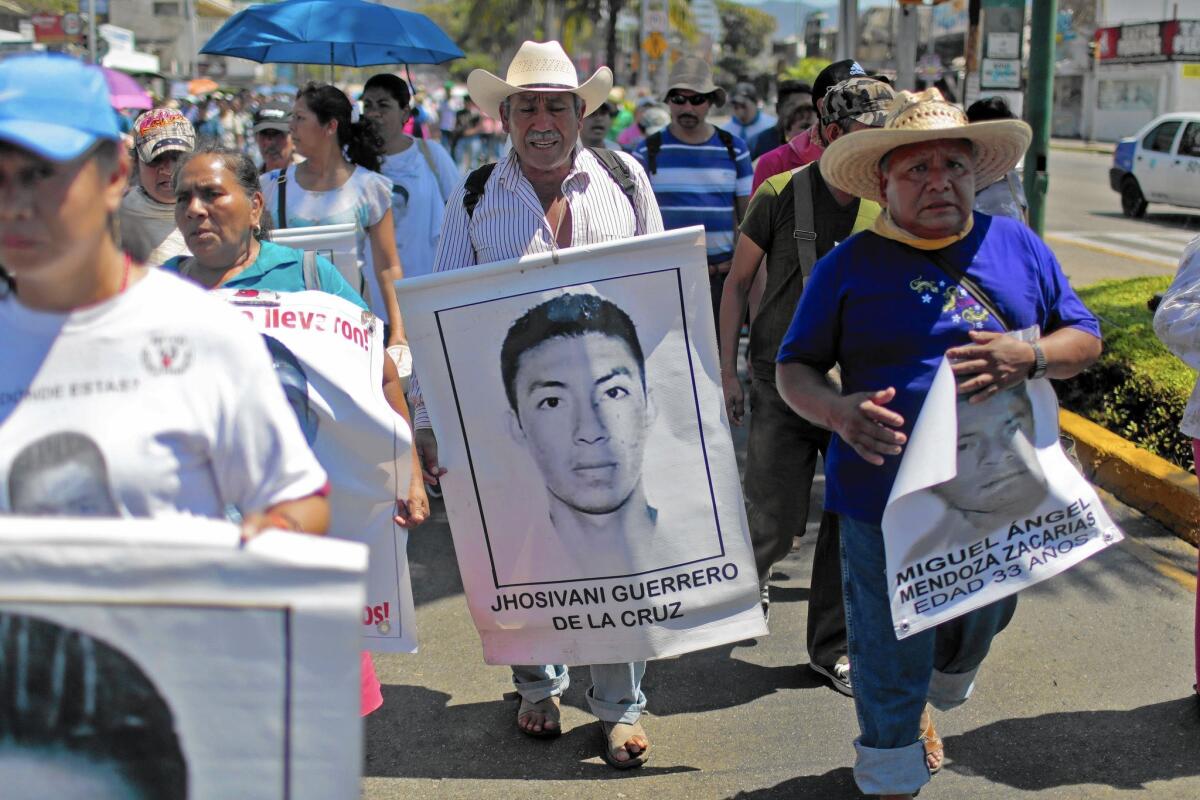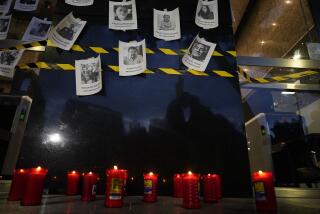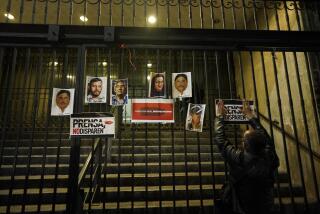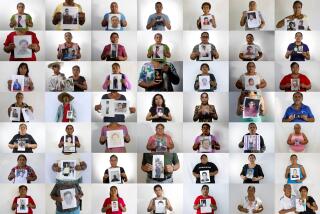Mexico says remains of the second of 43 missing students have been identified

A relative holds a portrait of Jhosivani Guerrero de la Cruz, one of 43 missing Mexican students, during a March rally in Acapulco. Mexican authorities said they have identified his remains.
Mexican authorities announced that forensic experts have identified the second of 43 missing college students from remains officials say were found in a trash dump in the state of Guerrero.
Atty. Gen. Arely Gomez said late Wednesday that further DNA testing by experts at the University of Innsbruck in Austria who have been working with federal government investigators linked the remains to student Jhosivani Guerrero de la Cruz.
Gomez, during a news conference, said the development “shows the existence of key evidence” and “the robustness of our investigation.”
Guerrero de la Cruz was the second student to be identified by the government investigation into the mass abduction of 43 students in the city of Iguala nearly a year ago. The students came under fire from local police and were detained and abducted after they tried to leave the city on local buses they had commandeered.
In December, analysis by the forensic specialists revealed that DNA linked to student Alexander Mora was present in some of the more than 17 body fragments sent to them by Mexican authorities, apparently recovered from a river near the rubbish dump in which they say the students were incinerated.
The latest statement by Mexican authorities appeared in defiance of a report published 10 days ago by an interdisciplinary working group created by the Inter-American Commission on Human Rights. That report found it was “scientifically impossible” for the students to have been killed and burned in the trash dump.
The six-month investigation by that group found no evidence of the fire that the Mexican attorney general’s office says incinerated the students that night.
Hector de Mauleon, a columnist for El Universal newspaper, wrote Thursday: “The attorney general’s office began to respond because of the waves of criticism prompted by the report from the Interdisciplinary Group on the incidents that took place in Iguala on September 26-27. The investigation headed by Gomez began to move its pieces this week in an attempt to disprove the new information provided” by the report.
Federal police in Taxco late Wednesday arrested Gildardo Lopez Astudillo, or “El Gil,” one of the suspected leaders of the Guerreros Unidos drug gang that operates in Guerrero.
According to local media reports, Lopez signaled that the students were members of a rival gang — Los Rojos, or the Reds — prompting the attack on them in Guerreros Unidos territory. He is also reported to have put his name to a narco-manta — a message from drug gangs generally scrawled on plastic sheeting and left hanging in public places — directed at military personnel and federal police operating in Iguala in October. The message said the 43 students were still alive.
Federal officials have said they are investigating whether the students were victims of a case of mistaken identity by drug gangs.
The interdisciplinary working group report suggests the attack on the students was linked to the possibility that heroin was stashed in hidden compartments on at least one of the buses they had seized that night.
The group declined to comment Thursday on the latest announcement by Mexican authorities.
Felipe de la Cruz, spokesman for the parents of the 43 missing students, said late Wednesday that the families rejected the attorney general’s statement.
“We knew there was going to be a response from the government that would try to disprove the report” from the working group, he said.
Bonello is a special correspondent.
Cecilia Sanchez of The Times’ Mexico City bureau contributed to this report.
More to Read
Start your day right
Sign up for Essential California for news, features and recommendations from the L.A. Times and beyond in your inbox six days a week.
You may occasionally receive promotional content from the Los Angeles Times.






